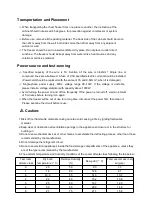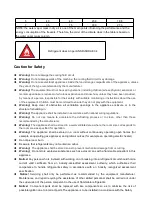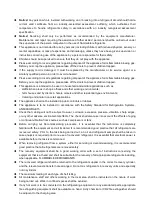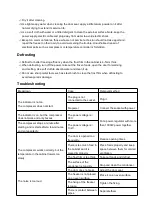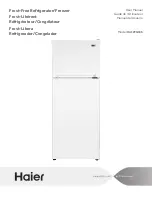
Notice!
Any person who is involved with working on or breaking into a refrigerant circuit should hold a
current valid certificate from an industry-accredited assessment authority, which authorizes their
competence to handle refrigerants safely in accordance with an industry recognized assessment
specification.
Notice!
Servicing shall only be performed as recommended by the equipment manufacturer.
Maintenance and repair requiring the assistance of other skilled personnel shall be carried out under
the supervision of the person competent in the use of flammable refrigerants.
This appliance is not intended for use by persons (including children) with reduced physical, sensory or
mental capabilities, or lack of experience and knowledge, unless they have been given supervision or
instruction concerning use of the appliance by a person responsible for their safety.
Children should be supervised to ensure that they do not play with the appliance.
Please according to local regulations regarding disposal of the appliance for its flammable blowing gas.
Before you scrap the appliance, please take off the doors to prevent children trapped.
If the supply cord is damaged, it must be replaced by the manufacturer or its service agent or a
similarly qualified person in order to avoid a hazard.
Please according to local regulations regarding disposal of the appliance for its flammable blowing gas.
Before you scrap the appliance, please take off the doors to prevent children trapped.
This appliance is intended to be used in household and similar applications such as
- staff kitchen areas in shops, offices and other working environments;
- farm houses and by clients in hotels, motels and other residential type environments;
- Catering and similar non-retail applications.
The appliance shall not be installed in public corridors or lobbies.
The appliance is to be installed in accordance with the Safety Standard for Refrigeration Systems,
ANS\/ASHRAE 15.
Check that cabling will not be subject to wear, corrosion, excessive pressure, vibration, sharp edges,
or any other adverse environmental effects. The check shall also take into account the effects of aging
or continual vibration from sources such as compressors or fans.
Before carrying out Decommissioning procedure, it is essential that the technician is completely
familiar with the equipment and all its detail. It is recommended good practice that all refrigerants are
recovered safely. Prior to the task being carried out, an oil and refrigerant sample shall be taken in
case analysis is required prior to re-use of recovered refrigerant. It is essential that electrical power is
available before the task is commenced.
When removing refrigerant from a system, either for servicing or decommissioning, it is recommended
good practice that all refrigerants are removed safely.
The recovery equipment shall be in good working order with a set of instructions concerning the
equipment that is at hand and shall be suitable for the recovery of all appropriate refrigerants including,
when applicable, FLAMMABLE REFRIGERANTS
The recovered refrigerant shall be returned to the refrigerant supplier in the correct recovery cylinder,
and the relevant waste transfer note arranged. Do not mix refrigerants in recovery units and especially
not in cylinders
The maximum loading of each type of shelf is 8kg.
All maintenance staff and others working in the local area shall be instructed on the nature of work
being carried out. Work in confined spaces shall be avoided.
If any hot work is to be conducted on the refrigerating equipment or any associated parts, appropriate
fire extinguishing equipment shall be available on hand. A dry chemical or CO2 fire extinguisher should
be adjacent to the charging area.
Summary of Contents for PFR700G
Page 8: ......


